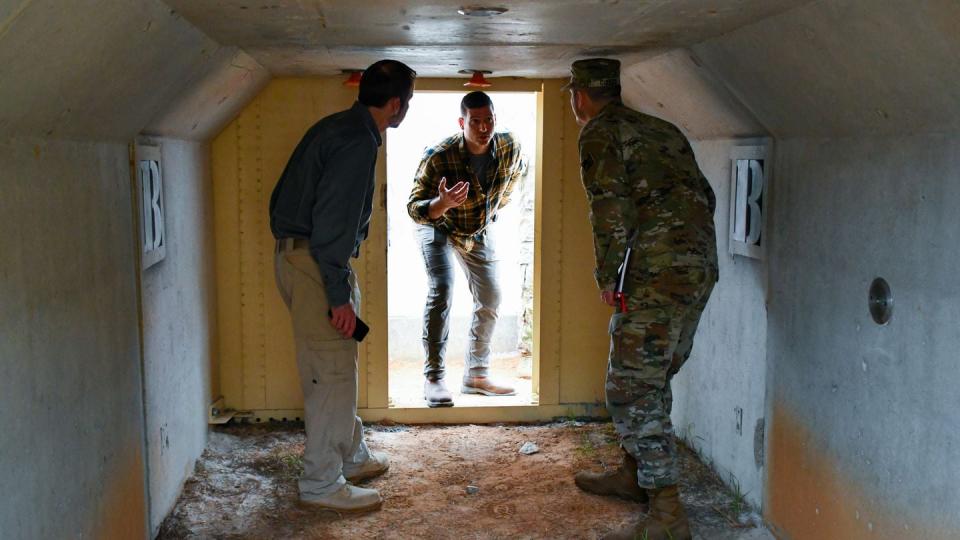Army engineers quietly upgrade bunkers to protect soldiers from TBIs
U.S. military bunkers across the Middle East are getting new doors and added protection as recent events draw attention to indirect blast-related injuries.
To date, more than 400 concrete bunkers in global hotspots have been retrofitted to better protect the troops inside from blast effects, the commander of the Army Corps of Engineers’ Transatlantic Division, serving U.S. Central Command, told Military Times in a March interview.
“That is going to have a direct impact, if those bases are attacked with those large missiles and the soldiers are in there,” Brig. Gen. William Hannan said. “With these retrofitted bunkers, that’s going to offer a much greater protection.”
Interest in reinforced bunkers dates back to 2021. A little over a year after news broke in early 2020 that more than 100 service members had been diagnosed with traumatic brain injury following an Iranian missile strike on the Al Asad air base in Iraq, the Army Corps of Engineers published a contracting notice seeking the bunker retrofit. The work would take place in Iraq, Kuwait and Jordan, the notice specified.
“United States Army Central has a need for a significant, but indefinite amount of these bulkhead with door systems throughout the indicated countries in order to retrofit existing personnel bunkers, with the purpose of enhancing the level of protection,” the pre-solicitation stated.
Since then, concern around blast-related traumatic brain injuries that might previously have gone undiagnosed has only intensified. As recently as January, another Iranian rocket attack on Al Asad left multiple troops with TBIs.
Even in the relative protection of a bunker, the pressure wave that follows an explosion can cause harm. The tightly enclosed space intensifies the effect.
“[Soldiers are] in the bunkers, they’re protected from fragmentation,” Hannan said of the 2020 Al Asad attack that sent the Army Corps of Engineers in search of solutions. “But it was such a large missile, the overpressure gave them some traumatic brain injuries.”
Work on the retrofit project began, Hannan said, with testing of an improved bunker design at the Joint Readiness Training Center at Fort Johnson, Louisiana, in 2023. The design is intentionally simple: it includes a reinforced steel door and an added barrier in front of the door, as well as coverage of the bunker surface with sandbags or other materials designed to mitigate the blast pressure.
Testing also involved best methods for keeping bunkers ventilated, with an eye to informing new-construction designs.
“You can imagine, if you get a bunch of soldiers in a bunker in the middle of the summer in the Middle East, it can get a little uncomfortable or hot in there,” Hannan said. “So we also wanted to test, ‘Hey, what’s the best way to get airflow?”
Hannan said a series of bunkers were constructed in a circular formation and a large explosive charge set in the middle, to test the blast pressure and performance of the bunker updates. Ultimately, he said, the proposed design performed even better than expected.

The bunker retrofit materials — particularly those covering the surface of the structure — are intentionally generic and easily substituted.
“We designed it with materials in a way that a soldier construction unit or troop unit could order materials and put it together themselves,” Hannan said. “So we also wanted to make it really user friendly to the units out there, where we wouldn’t have to go through any crazy construction or contracting process, where we can also make it just a supply ordering process.”
The 400 completed retrofits, which also included bunkers in Syria, are likely not the end of the project, Hannan said. Particularly with continuing airstrikes on U.S. bases, units across CENTCOM are examining their need for bunker retrofits and new builds, Hannan said.
“They’re really looking at force protection across the [area of responsibility],” Hannan said. “But there’s a good chance we’ll have to do additional retrofits in the future.”

